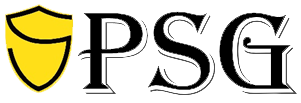Counterfeit Kennedy half-price coins
Release time:2023-05-23
I've been working as a professional numismatic grader for over 20 years and I'm still amazed at what's on my desk. Recently, when grading coins in PCGS shipments from Hong Kong, two such surprises emerged in one shipment. Filed from an alternative service in China were two counterfeit Kennedy half-dollars.
The Kennedy Half-Dollar is not the target of counterfeiters as many believe. However, the people who make these counterfeit coins must have thought it profitable to do so. The submissions are dated 1968-D and 1969-S and, if genuine, will be made of 40% silver, with an intrinsic value of approximately $3.75 per coin based on today's melt value of about $25 an ounce. However, neither coin is silver. However, no matter how low the value, the existence of these two fake Kennedy coins claiming to be ordinary dates should be noted.

for the 1968-D pseudo-semi-1968-D and 1968-D semi-elements for comparison.
The first imitation of the 1968-D half-dollar product had numerous problems, and with minimal scrutiny, it was determined that it was a forgery. For the products of the American Mint, the surface and design are completely incorrect. For example, zooming in on a bust of John F. Kennedy reveals that the surface is textured, almost pixelated, and the design transfer is poorly done. This incorrect aspect is found in most of the coin's designs. For anyone who has studied American coins by mold design, the back will jump out because it's not even the correct design for a 1968 half-dollar, the copied design should be a half-dollar made between 1971 and 1984.

PCGS PR68 ratings for the 1969-S counterfeit and 1969-S semi-dollars.
A work claiming to be a 1969-S half-dollar piece is an even worse forgery. The half-dollar issued by the San Francisco Mint in 1969 was a pure proof coin, but the counterfeit was not made in the image of the proof coin, which caused the first problem with the coin. It sounds as bad as the so-called 1968-D makes, with a textured surface and too thick and blurry handwriting. Among more design elements, the imprint of the San Francisco stamp is incorrect, and no such "S" imprint is produced in this style. For the 1969 half-dollar, the design of the back is also incorrect.
Although both coins were rated "MS63" by the agency that placed them, they are indeed counterfeit. The real danger of such works is not to fool experienced numismatists or professional hobby-related services, but to fool unnoticed novices or dealers. I remember decades ago, when batches of Chinese dollars began to appear salted counterfeits. A dealer told me that they bought 100 yuan and 10 turned into counterfeit money. At the time, the dealer's profit margin was 10%, so 10 out of 100 counterfeit coins ruined their trade. Few traders or even buyers take a closer look at 40% of the half-dollar silver coins, which are usually sold in $1,000 face value bags. It is fakes like this that have the potential to ruin deals and deceive buyers. This also prompts recognition of the importance of buying coins graded by professional coin grading services, which are carefully vetted before grading and whose authenticity can be trusted by buyers – regardless of the value of the coin.
keyword:Counterfeit Kennedy half-price coins
next



